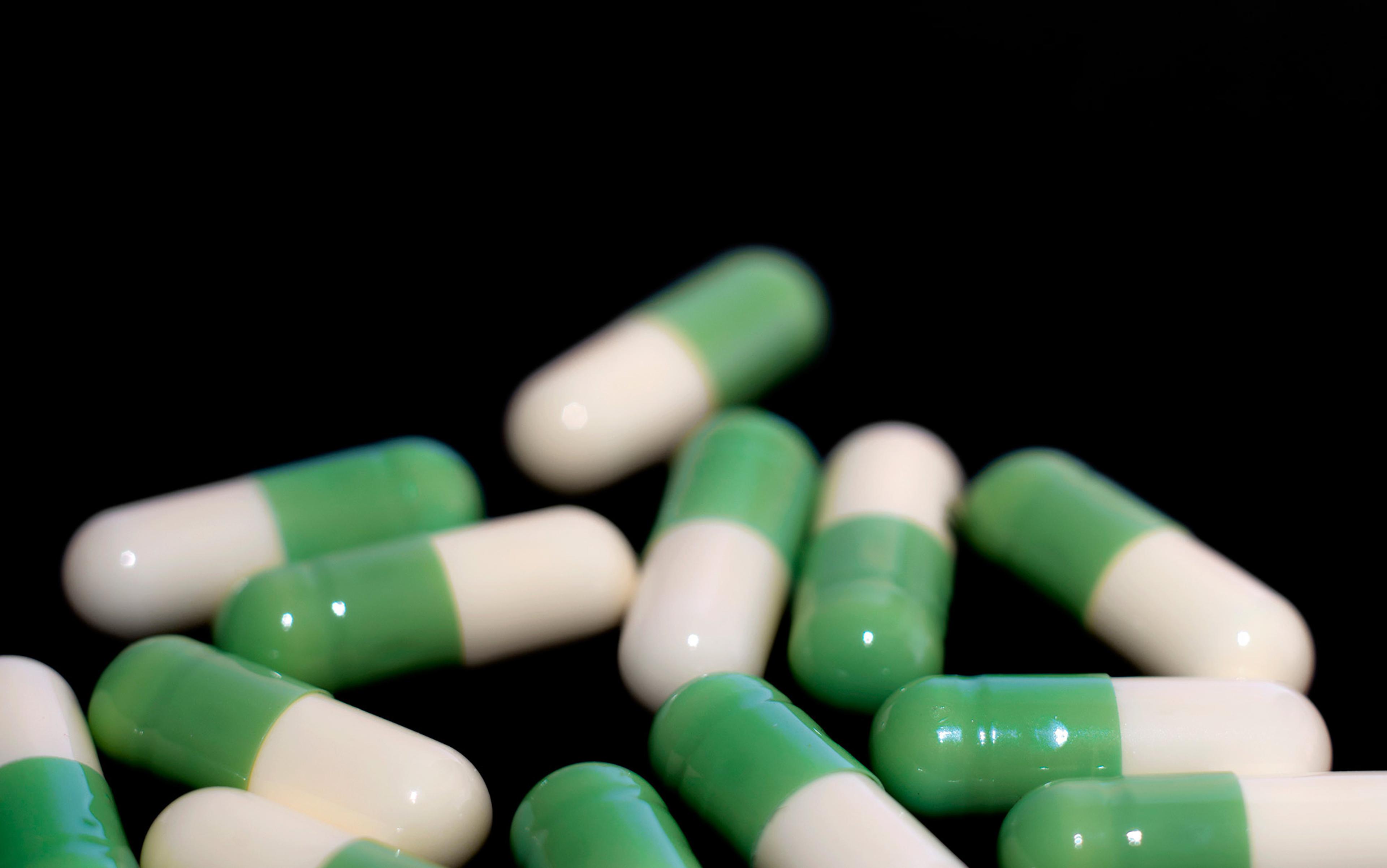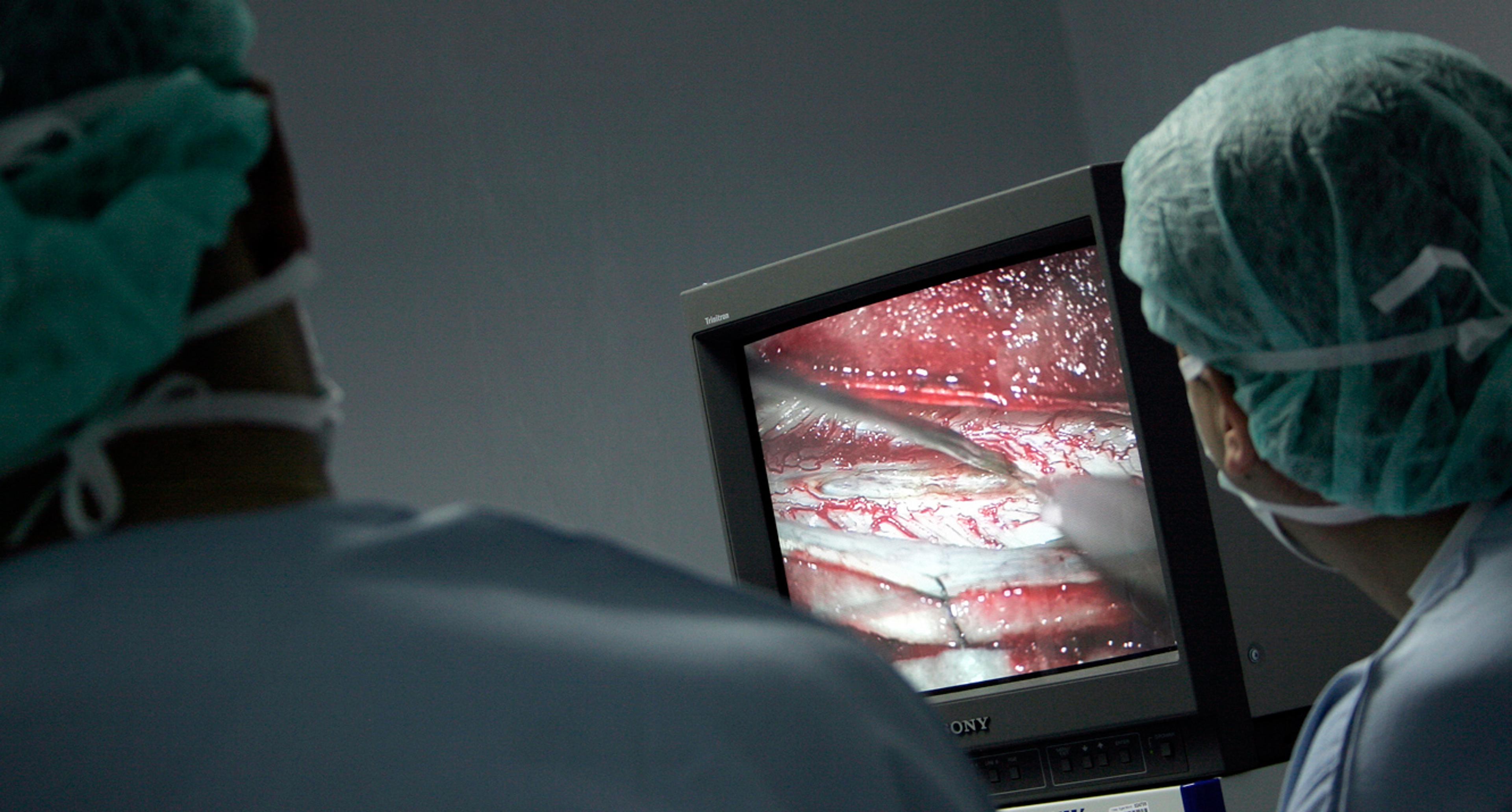I was first prescribed antidepressants in 2000. Ever since, I have been on and off these drugs, mostly because the idea of taking them made me uncomfortable. It was a mixture of guilt, probably not unlike the guilt some athletes must feel for taking a prohibited doping substance; shame for needing a pill that had such a profound impact on my behaviour; and frustration with the recurrent episodes of depression that would bring me back to the antidepressants I would then quickly abandon.
I broke this cycle when my daughters were born and I realised that it would be irresponsible to stop treatment because being a good father meant having a stable mood. It was a purely pragmatic decision, made without resolving the existential issues that antidepressants had raised for me before. That being the case, I do not write with the fervour of the newly converted, although sometimes I speculate about how much smoother my life would have been had I decided much sooner to stick to the antidepressants.
Depression is widespread. According to the World Health Organization, in 2015 depression affected more than 300 million people, or 5.1 per cent of females and 3.6 per cent of males, worldwide. It was the single largest contributor to global disability, and the major cause of the nearly 800,000 deaths by suicide recorded every year – suicide being the second leading cause of death among 15- to 29-year-olds.
Despite these statistics, depression remains misunderstood by the public at large and is, it seems, best described by those who have lived it. The novelist William Styron wrote in his memoir Darkness Visible (1990) that: ‘For those who have dwelt in depression’s dark wood, and known its inexplicable agony, their return from the abyss is not unlike the ascent of the poet, trudging upward and upward out of hell’s black depths.’ Andrew Solomon’s memoir The Noonday Demon (2001) is a useful tome and the book on depression for the public at large. ‘It is the aloneness within us made manifest,’ he writes of the state, ‘and it destroys not only connection to others but also the ability to be peacefully alone with oneself.’
For those outside the experience, part of the confusion comes from the association of the disease with melancholia and sadness, feelings we all have experienced. Malignant sadness, or depression, is something else entirely, and it takes a leap of faith to accept that too much of something can become something completely other.
Clinical depression manifests in different forms. The two main categories are major depressive disorder (MDD) and dysthymia, which is a milder form of depression. (Episodes of major depression alternating with extreme euphoria characterise bipolar disorder, but this disease is typically treated with mood-stabilising drugs, which are not the focus of this piece.)
Broadly, depression is a chronic, recurring and debilitating disease that turns you into a prostrated citizen, an absent or incompetent employee, a needy friend, a self-absorbed partner, a useless parent. You can’t think clearly, you can’t make decisions, often you can’t get out of bed in the morning and, even if you manage to stand up, you won’t find anything worth engaging with, not even your regular hobbies or your dearest friends and relatives. You also tend to ruminate endlessly, fuelled by feelings of guilt and worthlessness, which sometimes leads to suicide ideation, suicide attempt and death.
Even if the vague links that some people see between depression and creativity are real, by sustaining depression you would still be making a pact with the devil, given the extent of the associated pain. If you have any doubts, read David Foster Wallace’s brutal short story, ‘The Depressed Person’ (1998), in which a young woman is depicted as a self-centred monster who asks: ‘What kind of person could seem to feel nothing – “nothing,” she emphasised – for anyone but herself?’
It is obvious that the discomfort I once felt over taking antidepressants echoed a lingering, deeply ideological societal mistrust. Articles in the consumer press continue to feed that mistrust. The benefit is ‘mostly modest’, a flawed analysis in The New York Times told us in 2018. A widely shared YouTube video asked whether the meds work at all. And even an essay on Aeon this year claims: ‘Depression is a very complex disorder and we simply have no good evidence that antidepressants help sufferers to improve.’
The message is amplified by an abundance of poor information circulating online about antidepressants in an age of echo chambers and rising irrationality. Although hard to measure, the end result is probably tragic since the ideology against antidepressants keeps those in pain from seeking and sticking to the best available treatment, as once happened to me. Although I am a research scientist, I work on topics unrelated to brain diseases, and my research is not funded by the ‘pharma industry’ – the disclaimer feels silly but, trust me, it is needed. I write here mainly as a citizen interested in this topic. I take for granted that a world without depression would be a better place, and that finding a cure for this disease is a noble pursuit. Without a cure, the best treatment available is better than none at all.
In second-millennium Mesopotamia, depression was treated with a concoction of poppy extract and donkey’s milk, which sounds delicious, but time is too precious to be wasted on anecdotal recipes when the suffering is so great. There is no universal medicine or therapy for depression. Several approaches are possible, frequently chosen on a trial-and-error basis and in a non-exclusive manner, including psychosocial treatments such as cognitive behavioural therapy, which are focused on changing cognitive distortions and behaviours, and therapeutic drugs. The psychotherapies have had their critics since the invention of psychoanalysis, but the biggest debate swirls around the use of antidepressants, especially the most popular configuration of these drugs, known as selective serotonin reuptake inhibitors, or SSRIs.
The drugs work directly on the human brain, which is comprised of around 86 billion neurons that communicate with each other through the release of neurotransmitters into a space called the synaptic cleft. These neurotransmitters modulate the electric signals that travel along the neurons and ultimately shape our feelings, thoughts and actions. Serotonin is one such neurotransmitter. SSRIs essentially block the molecular transporters that reuptake serotonin from the synaptic cleft back into the neuron that released it. By inhibiting this transport, the concentration of serotonin in the synaptic cleft is selectively increased while the concentrations of other neurotransmitters are unaffected.
For many like myself, this is enough to help depression lift, yet the critical drumbeat against these drugs goes on. There is strong opposition to antidepressants among a particularly resistant, yet heterogeneous crowd: those who have crystalised a mistrust of the profit-hungry pharma industry (partly justified by many examples of wrongdoing); those with a philosophical or mystical opposition to pills that interfere with the mind, particularly if these medicines are not ‘natural’; and those who make a living by promoting alternative treatments.
Critics ignore the finding that the magnitude of the effect increases with the severity of depression
Even decades after many of these treatments emerged to change the landscape of psychiatry, they are still hotly debated by people ‘full of passionate intensity’, to quote from W B Yeats’s poem ‘The Second Coming’ (1921). The American actor Tom Cruise, boosted by Scientology, and the English writer and critic Will Self, universalising what must have been a terrible personal experience with therapeutic drugs and a psychiatrist, have both pontificated against antidepressants, spreading the typical ideology-driven myths.
Some of those myths, such as the idea that these drugs are addictive ‘happy pills’ that produce the ‘high’ of a recreational drug, are pure lies; anyone who echoes them could be easily exposed as dishonest or ignorant. The most common antidepressants do cause withdrawal symptoms such as nausea, but reports of addiction to antidepressants are rare and tend to occur in patients with a history of drug or alcohol abuse. Unlike recreational drugs that are highly addictive, such as cocaine or heroin, antidepressants do not hijack the reward circuit that is associated with the euphoric rush of another neurotransmitter, dopamine.
The discussion gets more complicated when the scientific evidence for or against the effectiveness of antidepressants is evoked. Such evidence comes mostly from randomised trials in which some patients are assigned to a group that receives an antidepressant, and others to a group that is given a placebo. The conclusions of these studies can be distorted by different sources of error. The most important source of error is publication bias; much of the research is funded by the pharma industry, where there is a tendency to report studies that find positive effects for antidepressants, while studies that find no effect are left in the drawer.
Breaking the blind in clinical trials is another source of error. Here, the individual might correctly guess in which group he or she was included, based on the established side-effects of the drugs, such as dizziness, low sex drive, stomach aches or dry mouth, among others. A third source of error, caused by a skewed measurement scale, is overestimation of the effects.
All these issues are compounded in the popular mind by the tendency to emphasise not individual randomised trials but meta-analyses that combine multiple studies to increase the sample size, iron out discrepancies between different studies, and eventually extract a more valid, that is to say, statistically robust, conclusion. However, the ‘garbage in, garbage out’ dictum of computer science applies perfectly to these exercises. If a relevant proportion of the original studies is fundamentally flawed, the meta-analysis will not fix that problem.
One of the main findings ignored by critics of antidepressants is that the magnitude of the effect compared with the placebo increases with the severity of depression. In the go-to study cited by critics, published in 2008 by Irving Kirsch of Harvard Medical School and colleagues, this effect is attributed to the decrease in responsiveness to the placebo for the extremely depressed patients. But in a subsequent, technically superior analysis from Jay Fournier and colleagues at the University of Pennsylvania in 2010, the benefit of medications over a placebo is substantial, and not due to differences in response to the placebo. These findings appear unequivocal: while antidepressants could indeed be being prescribed to many people with mild depression who do not need them, they nonetheless work well in many patients with MDD. Overprescription and the usefulness of antidepressants to people with mild depression could be open for debate, as there are conflicting data in the literature, but it has been repeatedly demonstrated that antidepressants work in people with MDD. Why is it so difficult to accept this highly cautious conclusion of the published data?
The message is clear: antidepressants are better than placebo; they do work, although some work better than others
One reason for the recent surge of skepticism is a gigantic meta-analysis by the psychiatrist Andrea Cipriani at the University of Oxford and colleagues, published in The Lancet in 2018. While the earlier study by Kirsch had included 5,133 participants, Fournier’s had 718, and another study, by Janus Christian Jakobsen in Denmark in 2017, had 27,422, Cipriani and colleagues analysed data from 116,477 people – or 3.5 times more participants than in the three previous studies combined.
The sample size is not sufficient to ensure quality, but the authors were careful to select only double-blind trials and did their best to include unpublished information from drug manufacturers to minimise publication bias. They found no evidence of bias due to funding by the pharma industry, and also included head-to-head comparisons between drugs (which minimised blind-breaking). They concluded that ‘all antidepressants included in the meta-analysis were more efficacious than placebo in adults with MDD, and the summary effect sizes were mostly modest’. The results are summarised by a statistic, the odds ratio (OR) that quantifies the association between health improvement and the action of the antidepressant. If the OR is 1, then antidepressants are irrelevant; for ORs above 1, a positive effect is detected. For 18 of the 21 antidepressants, the ORs they found ranged from 1.51 to 2.13. These results have been widely mischaracterised and described as weak in the press.
It is not intuitive to interpret ORs, but these can be converted to percentages that reflect the chances of experiencing health improvement from the antidepressant, which in this study ranged from 51 per cent to 113 per cent. These percentage increases are relevant, particularly taking into account the incidence of the disease (20 per cent of people are likely to be affected by depression at some stage of their lives).
For comparison, please note the uncontroversial finding that taking aspirin reduces the risk of stroke – its associated OR is ‘only’ 1.4, but no one describes it as weak or has raised doubts about this intervention. It would be unscientific to describe the work of Cipriani and colleagues as the definitive word on the topic, but it’s the best study we have so far. The message is clear: antidepressants are better than placebo; they do work, although the effects are mostly modest, and some work better than others. This paper was an important confirmation in times of a reproducibility crisis in so many scientific fields. We don’t have to look too far: a major study was published this spring that does not confirm the association of any of the 18 genes that were reanalysed and had been proposed to be associated with MDD.
Now that the scale has dramatically tilted in favour of antidepressants’ efficacy, it is likely that the critics will keep insisting that we remain mostly ignorant about the causes of depression. To deal with this critique, we need to go back a few decades. Chance often plays a role in the discovery of our most famous drugs, as in the case of L-DOPA for Parkinson’s disease and catatonia, Viagra for erectile dysfunction, and antidepressants. Hollywood movies have been made only about the first two – Awakenings (1990) and Love & Other Drugs (2010) – but the discovery of antidepressants is cinematic in its own right.
Prior to the 1950s, depression was treated with sedatives, stimulants such as amphetamines, and electroconvulsive (shock) therapy, without much science backing up these approaches. But new treatments emerged as neuroscience advanced. In the 1950s, three observations led to what is still our current understanding of the action of antidepressants. First, in 1951, doctors from the Sea View Hospital on Staten Island noticed that a drug named iproniazid, used to treat tuberculosis, had a peculiar side-effect on patients, which was described at the time as ‘a sensation approaching euphoric dynamism’, including increased appetite, more energy and resistance to fatigue. This tempted psychiatrists to try iproniazid as a ‘psychic energiser’ in depressed patients, with encouraging results.
Biochemically, iproniazid is an inhibitor of monoamine oxidase (MAO), an enzyme that breaks down biogenic amines, a group of neurotransmitters that includes serotonin, dopamine, epinephrine and norepinephrine, among others. When the MAO enzyme is inhibited, these crucial neurotransmitters stay intact and become available for release into the synaptic cleft, influencing connected neurons and ultimately contributing to mood or behaviour. Iproniazid worked but because of its substantial adverse effects, such as liver toxicity, dizziness and drowsiness, it was eventually withdrawn from the market.
Second, around 1957, a drug named imipramine (brand name Tofranil), developed as an antipsychotic, showed little effectiveness on schizophrenics, but had remarkable effects on the depressive symptoms of schizophrenics with depression. In the words of the doctor who first noticed these effects: ‘Patients who had great difficulties in getting up in the morning, get out of bed early with their own initiative, at the same time as other patients. They initiate relationships with other people, start conversations, participate in the daily life of the clinic, write letters, and are again interested in their family matters.’
The ‘monoamine hypothesis’ said depression results from a depletion of serotonin, norepinephrine and dopamine
Imipramine was the first member of a class of drugs named tricyclic antidepressants (TCA) because of the presence of three rings in their molecular structure. TCAs act in several different ways, but their therapeutic effects are thought to result from the inhibition of the reuptake of norepinephrine and serotonin released into the synaptic cleft. The drug has side-effects such as dry mouth, drowsiness, dizziness and urinary retention, among others, and an overdose can be lethal.
The final observation revolved around reserpine, a treatment for hypertension that sometimes caused depression. Reserpine is an alkaloid (a naturally occurring organic compound containing basic nitrogen atoms) from the plant Rauwolfia serpentina. Its negative psychiatric effects were ultimately traced to the inhibition of molecular transporters; with the transporters inhibited, neurons retained neurotransmitters that would otherwise have been released into the synaptic cleft.
Combined, these three observations were the basis for the ‘monoamine hypothesis’ put forward in the 1960s, which proposed that depression results from a depletion of serotonin, norepinephrine and dopamine. Over the four subsequent decades, efforts concentrated on developing safer drugs with fewer side-effects within the frame of the monoamine hypothesis.
In the late 1960s, research began to single out serotonin. Decreased concentrations of this neurotransmitter were found in the corpses of depressive suicides, and binding molecules, called ligands, were developed to inhibit only the reuptake of serotonin. The first of these SSRIs, fluoxetine, was described in 1974. In 1989, it would reach the market under the name you’re probably familiar with: Prozac. In 1993 came venlafaxine (brand name Effexor), a serotonin-norepinephrine reuptake inhibitor (SNRI). In 2013, vortioxetine (brand name Brintellix) was approved as a ‘multi-modal’ drug for its ability to target the serotonin transporters but also several serotonin receptors. Over the years, the monoamine hypothesis became, at least for the non-experts, the serotonin hypothesis.
The human body contains at least 12,000 metabolites. On the day of his final exam, a biochemistry major might know a few hundred, but most of us will be able to name only a few dozen, with a clear bias for the metabolites known to influence behaviour. We will immediately associate adrenalin, cortisol, testosterone, oestrogen, oxytocin and dopamine with stereotypical behaviours and personality types, but what about serotonin? The molecule is certainly no obscure metabolite. The French novelist Michel Houellebecq named his latest novel Sérotonine (2019). But would you associate the ‘happy hormone’, as serotonin is often described, with the formation and maintenance of social hierarchies and the impetus to fight observed across the animal kingdom, from lobsters to primates? Indeed, since SSRIs have been found to influence our moral decision making, naming serotonin the ‘happy hormone’ appears to be a mistake. Apart from its role in mood balance, this neurotransmitter is involved in appetite, emotions, sleep-wake cycles, and motor, cognitive and autonomic functions. In fact, most of the body’s serotonin production is not found in the brain, but in the gut.
We simply do not have a consensual overarching explanation for how SSRIs/SNRIs work in depression, and how to link these neurotransmitters to the environmental stressors, genetic factors, and immunologic and endocrine responses proposed to contribute to depression. It is also clear that restoring the chemical balance of monoamines in the brain with a pill, which only takes minutes or hours, is insufficient to immediately produce therapeutic effects, which take several weeks. Indeed, without a complete picture of the mechanism of depression, it is not surprising that the available drug treatments are not fully effective. In a study involving thousands of MDD patients consecutively encouraged to move to a different treatment if they did not achieve remission from the previous treatment, only about 67 per cent of the MDD patients taking antidepressants went into clinical remission, even after four consecutive treatments. Thus, there is a large group of patients who don’t respond to SSRI/SNRIs, which raises doubts about the monoamine hypothesis to explain depression in full.
Other ideas have emerged. One line of thought focuses on the neurotransmitters glutamate (involved in cognition and emotion) and GABA (involved in inhibition), among others. One of the most exciting findings in the field is the clinical efficacy of ketamine, which targets glutamate neurotransmission, producing immediate effects in patients refractory to SSRI/SNRI treatments. Along with the monoamine hypothesis, most of these newer approaches are somehow related to the notion of neuronal plasticity, the ability of the nervous system to change, both functionally and structurally, in response to experience and injury, which can take some time to occur. Thus, it could be that the decreased levels of monoamines are not the real cause of depression, perhaps not even an absolutely necessary condition for depression. The data certainly suggest that there might be better targets to be found, and that the pharmacological approach has to become progressively more tailored.
That said, the temptation to dismiss the monoamine hypothesis to score points against antidepressants shows a lack of understanding of how medicine has worked for most of its history; imperfect but useful therapies have been the rule, even as we refine our understanding of disease.
We have an inbuilt need for self-control, and the idea that a drug fixes our behaviour is not attractive
The monoamine hypothesis was a remarkable triumph of deductive reasoning, and deserves better from critics who say that depression is so complex it cannot be treated by tweaking neurotransmitter levels. Such a view seems to predate the lessons of chaos theory, which holds that complex systems can be ruled by extremely simple equations, and that small changes can have big consequences. It is also a view not supported by our understanding of biological systems and disease, because we know that a cause as minuscule as a single amino-acid change can make the difference between a healthy life and a living hell.
If you ever tried to convince someone to take antidepressants, maybe you used the argument ‘antidepressants are to depression as insulin is to diabetes’. This recurrent comparison might be useful to diminish the stigma around antidepressants, but for the depressed individual the analogy has two major problems. The first is trivial: he has the option not to take antidepressants, which creates the burden of choice, whereas the diabetic will die without the insulin shots. The second is subtler, but goes to the heart of the issue: a diabetic would be furious if told that he had never needed insulin in the first place, that he had been a victim of a big scam to extort money from him for life. If the same story were told to a lifelong consumer of antidepressants, he might display public indignation as well, but deep inside some pride could emerge from the realisation that, after all, he survived on his own, without any drug. We have an inbuilt need for self-control, and the idea that a drug fixes our behaviour is not attractive. Thus, unconsciously or not, each time someone poses as a contrarian skeptic or whistleblower claiming that antidepressants don’t work, he is essentially a crowd-pleaser.
The key difference between insulin and antidepressants is that the former heals the body, whereas the latter fix the mind, and our sense of self is more strongly attached to the mind than to the body. We do not spend a minute thinking about our pancreas, unless it fails to work. In contrast, our conscience can easily become fixated on a moral dilemma when we take drugs to change the brain. Antidepressants restore the healthy state just like any other medicine, but by tapping into processes so intimately connected to our perception of the self and our moral compass, they raise an existential problem – one that is likely to gain relevance as these drugs become more refined and we leave mental-health restoration for the realm of cognitive enhancement.
The constant trashing of antidepressants has created an absurd situation. These drugs are the most rigorously scrutinised treatments for depression we have to date, yet they keep getting a bad press while ‘holistic’ approaches such as practising sports, yoga or salsa dancing, and consuming St John’s wort, Omega-3 fatty acids, soul food, daylight, Radiohead or J S Bach, perhaps even poppy extract and donkey’s milk, get a pass from everyone. Antidepressants don’t fix the sources of depression that can trigger the disease, they merely fix a biochemistry that makes some of us more vulnerable to stress and life in general. It is a truism that these drugs should be combined with life changes, and that transformative life events remain relevant for depressed individuals taking antidepressants. The Anatomy of Melancholy (1621) by Robert Burton advised his audience to ‘be not solitary’, and that ‘every man almost hath something or other to employ himself about, some vocation’. This advice is as good as ever. But given the state of the art, the high rate of antidepressant discontinuation, and the tragedy that a depression could trigger, bold statements such as ‘antidepressants don’t work’ are a disservice to the public.






